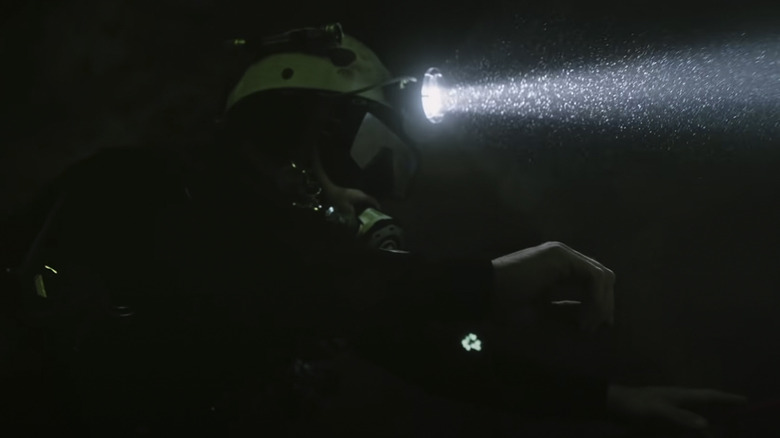
After winning an Oscar for their work on the astounding rock climbing documentary "Free Solo," directors E. Chai Vasarhelyi and Jimmy Chin are back with another stellar doc about how single-minded devotion to one's passion can lead to incredible results. But instead of detailing the achievement of a single person, "The Rescue" expands the scope and tells the unbelievable true story of how several of the world's best cave divers came together to save a teen soccer team in Thailand.
I remember this story dominating the news as it was happening in 2018, but I didn't know the details of how the rescue was carried out. In this movie, Vasarhelyi and Chin lay everything out for the audience, setting up the boys' astronomical odds of survival, introducing us to the men who saved their lives, and showcasing jaw-dropping footage from inside the caves. They also mix in some excellent recreations, some of which look so real that you may not be able to tell the difference; it helps a great deal that the actual divers who were present during the rescue participated in the recreations.
I spoke with the filmmakers over Zoom about how their wariness about tackling this project, the complications caused by the pandemic, filming those recreations (Chai likens them to "demonstrations"), and more.
"This One Felt Right"
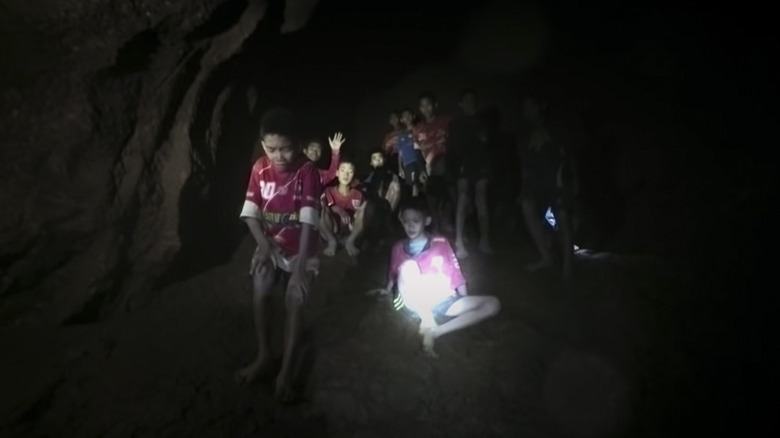
I want to start by going back to when "Free Solo" debuted. Were you fielding offers for new projects while you were doing the press rounds for "Free Solo"?
Chai: Well, this wasn't about offers. This was something that we tracked and really wanted to make, and I think, like some in 2018, we were fascinated with the events as they were unfolding. So this is something we chased as opposed to being offered.
So it sounds like you guys sought this out and were really doing the work to track it down. What did that work look like for you in those early days, in terms of getting the rights or however it came to be?
Chai: There was a whole rights situation around the story. National Geographic had the nonfiction rights to the divers' stories, and another filmmaker had started to film and it didn't work out. So once we were aware of that, we pursued National Geographic.
Jimmy: It helped that we had worked with National Geographic on "Free Solo."
What was it about "The Rescue" that made you say, "Now is the right time to make this movie"? I imagine you could have made any number of projects in the wake of how successful "Free Solo" was.
Chai: We don't really think that way. It was just more that this was a story that was just incredibly compelling to us personally and looked at questions we were interested in, and also we felt that were poignant and to the moment. This idea of how people from everywhere came together to achieve the impossible. It was a story and questions we were willing to live with for a while. Because that's the whole thing with nonfiction: you start, and you're in for quite some time. This one felt right.
Jimmy: Chai says this, and we've discussed this too, but: you only have so many films in your future. So it has to matter, and in a perfect world, for us, the universal themes and the ideas behind it will transcend the story. That's what we try to work towards. We saw this film and this story as a story that could transcend.
"We Had Three Cinematographers Drop Out"
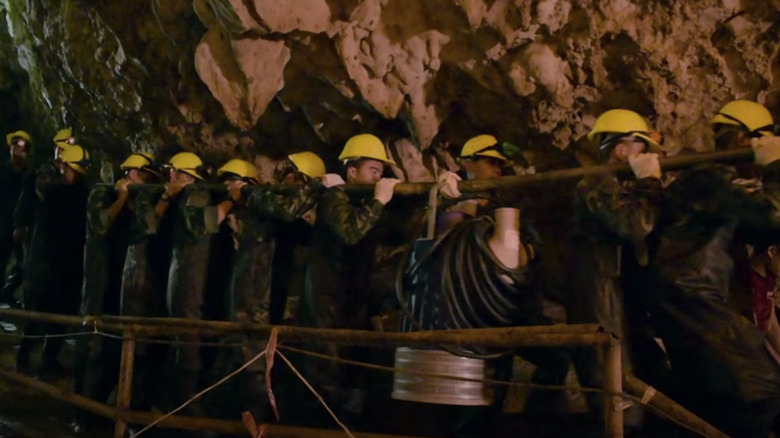
I went back and checked the date for when it was announced that you two were going to be making this movie, and it was March 2, 2020 - just a few days before the world shut down.
Chai: Yeah.
Jimmy: (sarcastically) Good timing! (laughs)
How far into development were you at that point, and how did the pandemic affect the plans you might have had in place?
Chai: We started on the film about six months earlier, and our first trip to Thailand was planned for February 2020. We had three cinematographers drop out. No one knew what was going to happen. So we postponed that shoot, which seemed prudent given that our children would be in the States. It just seemed like it was the right thing to do. It went on from there.
It sounds like a nightmare scenario. Tell me about some of the challenges you had to overcome during that period.
Chai: I mean, the point about this film, it's about this great working example of why people make documentaries. In documentaries, the constraints, the challenge, is to find to innovation or to find the creativity. And this film was a great story, but there was absolutely no footage from inside the cave.
Jimmy: Very little.
Chai: Very, very little. Certainly not enough. So starting there, the constraints were pretty significant. But it was kind of a good fight always, because you knew you had the story and the story was probably important, and it was something we were willing to be emotionally invested in.
"Authenticity Is Really Important To Us"
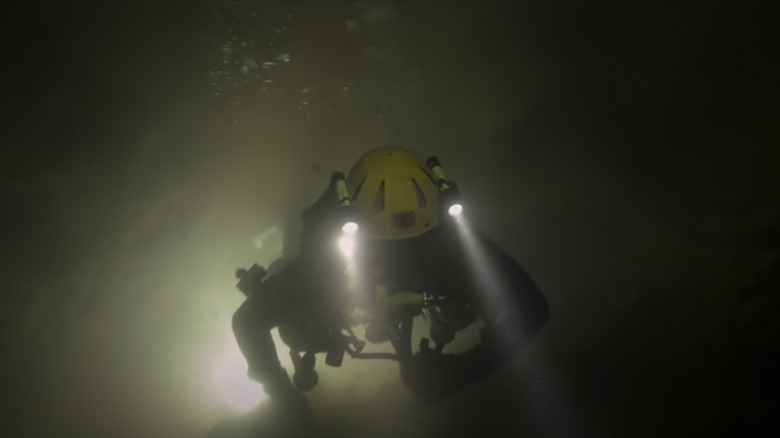
I'm fascinated by the balance between footage that was captured in the moment as this story was taking place, and the reenactments that you orchestrated – some of which included the same people who participated in these events the first time around. Can you tell me about you arrived at the decision to approach the construction of the film using those methods?
Chai: It was no choice. It was either going to be like –
Jimmy: Animation.
Chai: There was just no ... so, what we did know was we had a few amazing things. Like when they find the kids, or that moment when Harry is anesthetizing the first child. And also the oxygen meter. This was stuff we understood we had, and there were also rumors of other footage. But anything underwater, there was nothing. So the reenactments became a necessity. It's less a reenactment than a demonstration, because it was the real guys in the real stuff showing us what they really did. For people who weren't present for the actual rescue – this is our first film like this, where we weren't present for the main action – we learned something. It was a teaching opportunity where we could actually understand the gravity of tying a child's hands behind their back, pushing them underwater. It was stuff you can't fully understand until you see it, and our objective was to try to convey that for an audience. But we only learned that through the reenactments.
Jimmy: I think authenticity is really important to us. I think having the divers actually show us how they did it and say, "Oh, no, we did it this way because you can only carry so many tanks and shove them through," or "Oh, Jason carried five tanks..." When you see a person hauling five tanks through a submerged cave, there's just so many aspects of it that were very eye-opening. To a degree, we get that world in the sense of people having a life pursuit of doing something that has very high stakes, very high risks, there's a certain mentality behind it. There's a certain passion and commitment they bring to their craft that we understand and relate to. So the reenactments for us, and that experience of working with them, was really important for us, and it informed a lot of how we thought about the film.
"It Was Done In A Tank"
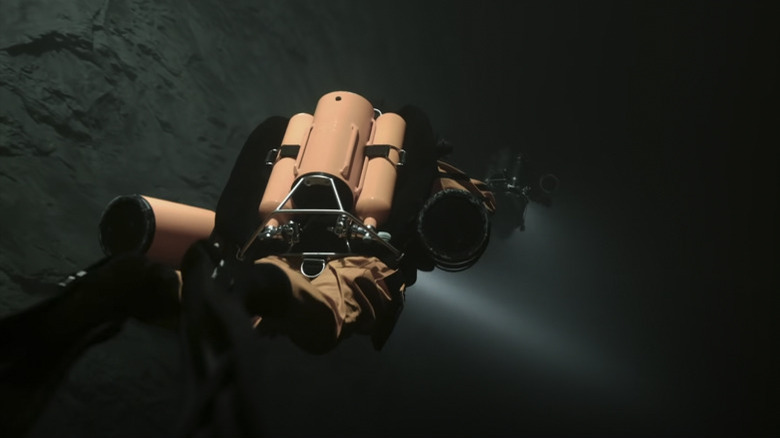
Were those demonstrations all filmed in the same cave system in Thailand, or were you able to cheat that because it was more practical to film in other areas?
Chai: It was in the middle of the pandemic, so it just wasn't feasible to go to Thailand, even though ideally it would have been that. So it was done in a tank.
Wow. That looks incredible for being done in a tank.
Chai: (Self-deprecating) Because it's so dark.
Jimmy: I'm glad you even asked the question, because it's like, "Wow, he really thinks it was shot in the cave."
It looked great. So were there any sort of pandemic-related testing procedures you had to do when you were shooting in a tank? Because I imagine a tank as more of an open space, but maybe the confines were a little bit tighter?
Jimmy: Yes. We did it in October of last year, so at least by that point, there was some protocol established. A lot of films were being made and productions were finding their way through how to do this safely. So yes, there was a lot of testing protocol. I'm very proud and happy to say that we did not have any covid incidents on our production.
Chai: Also, to the divers' point, the tank is highly chlorinated. (laughs) But yeah, I mean, it was nerve-wracking. The divers were –
Jimmy: Rick is, what?
Chai: He's 60. So, "not on our watch" was kind of the [mantra].
"Documentary Films Are Hard To Make"
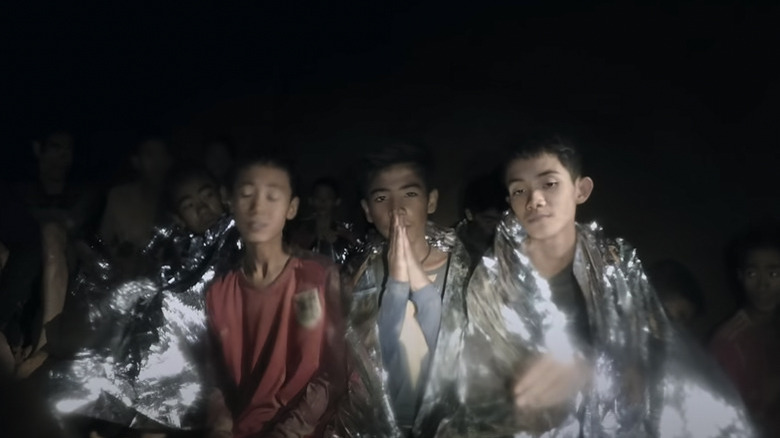
You mentioned the three cinematographers dropping out. Were you able to make that ground up elsewhere? Were you able to hire other people, or just sort of do more with less by the time it came down to actually shooting stuff?
Chai: We filmed with remote crews. Because of the pandemic, we've never met Dr. Harris because he lives in Australia, and there are super stringent covid rules. So we filmed with remote crews everywhere. We would be asking the questions over Zoom, and there would be a crew there in person that's been tested. The whole protocol's been followed. So I think what we lost, then, was time. I did eventually end up going to Thailand, but had we had certain meetings two years earlier, we would have had more material earlier. Instead of, it came in drips and drabs and was very frustrating.
Jimmy: It was hard to anticipate. Normally, we'd [say], "We know it exists. We know it's out there. Are we going to be able to find it?" I guess it goes without saying: documentary films are hard to make to begin with. And then add an entire layer of a global pandemic. Much like everything else in the world, it added a lot of complexity.
Tell me about the way you used CG to clarify the geography of the cave, because obviously that's vital context for the audience to have.
Chai: We're really lucky that National Geographic had actually had this TV show where they did a 3D scan of the cave. We were able to acquire that from them. It's within the company.
Oh, cool. So you could just use those assets?
Chai: We could use those assets, and those are [otherwise] prohibitively expensive.
Jimmy: And then build from it.
Chai: Build from it. So, like, the CG's all based on actual scans of the cave.
Jimmy: So it's accurate.
"We Were Hoping To Be The Truth-Setters"
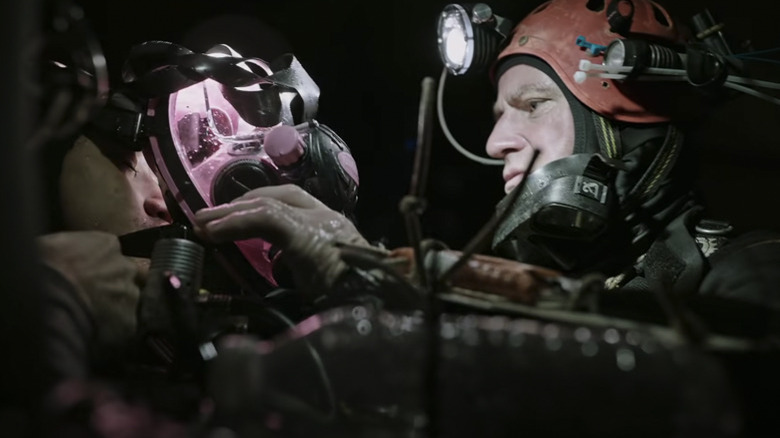
It wasn't long after this rescue took place until a bunch of Hollywood projects were announced adapting it for film and television. Were you in any way wary about taking on this story because it was, in theory, going to be so well-covered?
Chai: Yes, we were incredibly wary. We were actually tapped to direct one of those feature projects, and it was always like, "Nonfiction would be great and not fiction." We were very wary. But I don't know, this story is so rich, there's room for a lot of different versions, and the rights were so segmented. Honestly, for us, the nonfiction is where we get our – it was all about the problems, and that was exciting. Especially when you're stuck in covid and pacing around a room over and over again. "How can I fix this?" or "I can never fix that." It's about problem solving.
Jimmy: We were hoping to be the truth-setters. Really diving in, like investigative journalists and really getting the story right. That was really important for us. It was important for us to get in front of it.
I was curious about the soccer team's coach, who was trapped in the cave with them. Was the extraction process any different for him since he was older and presumably physically bigger than the boys on the team? Do you know anything about that?
Chai: Yes. It was actually one of the parts that's not in the film because it's too complicated. It wasn't different. It was Jim Warny, who's the fifth diver added on the last day, who brought out the coach, and he actually had an incident where he kind of came out of his anesthetization and grabbed the breathing pipes. I've met him with several of the kids in Thailand. It's less that he's the coach – he's the assistant coach. The main coach was not there that day. And he's kind of like a big brother to those kids.
Jimmy: How many years older?
Chai: He's 25 now, so he was 22 at the time. Like, they sit on his lap. Also, he's an undocumented person from northern Thailand, so he also doesn't speak fluent Thai. So there's an interesting dynamic, but he's a very gentle soul, and these children really look up to him.
Jimmy: He was previously a monk.
Oh, wow. So I probably have time for one last question for you guys. What's the status on "Nyad?" [Their next film is a narrative feature about Diana Nyad (Annette Bening), who in 2013 became the first person to ever swim the 103 miles from Cuba to Florida.] How are you feeling about making the jump from documentary to narrative?
Chai: We're terrified. Isn't that the point? (laughs) But I think every film we make, we're terrified and don't want to do it, and then we're suddenly there. We're very excited.
Last I heard, production was supposed to start last summer. Were you able to start at that point?
Chai: Pre-pro starts in November.
"The Rescue" hits theaters on October 8, 2021.
Read this next: The Best Movies Of 2021 So Far
The post The Rescue Directors on the Challenges of Making a Documentary During the Pandemic [Interview] appeared first on /Film.
0 Commentaires